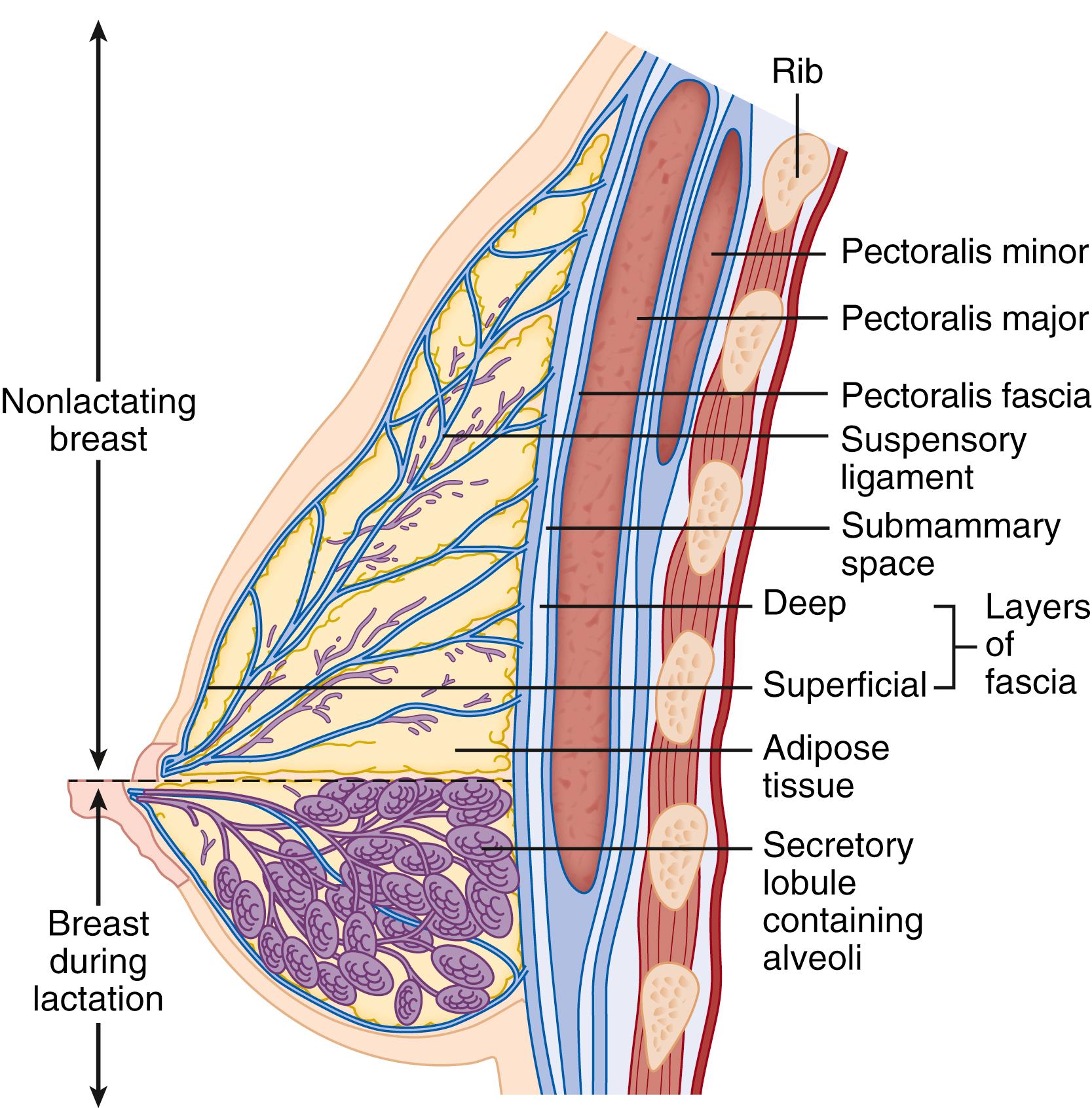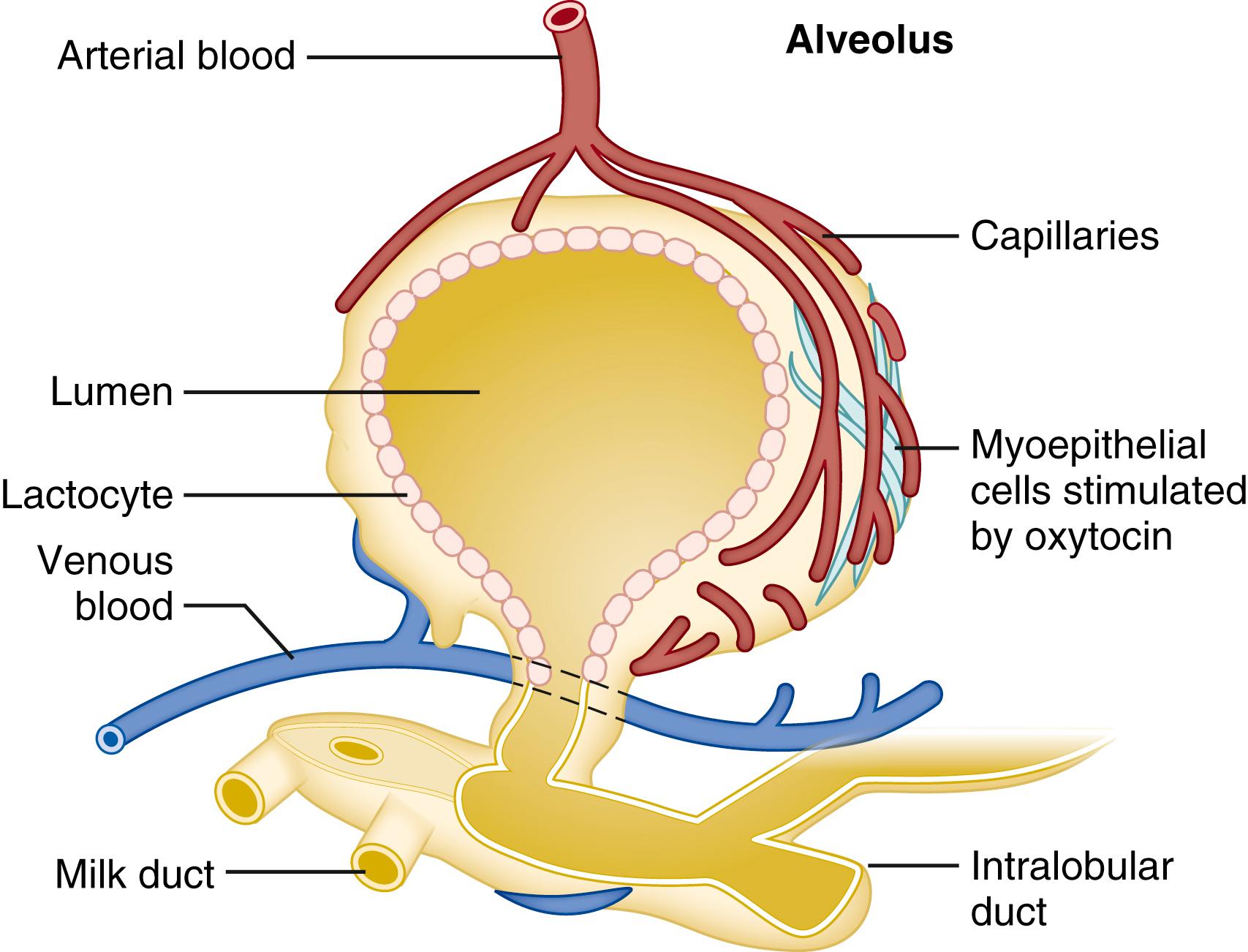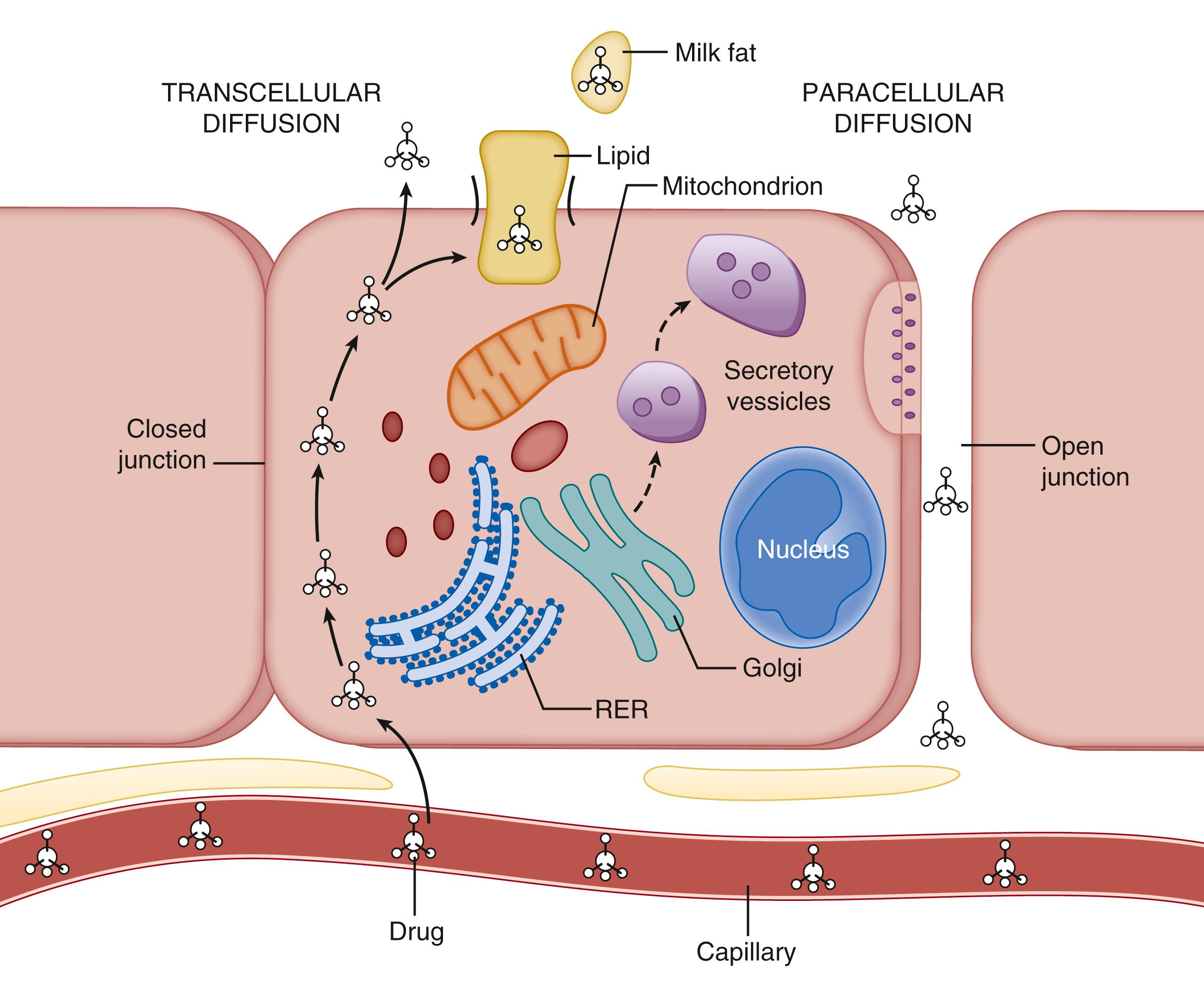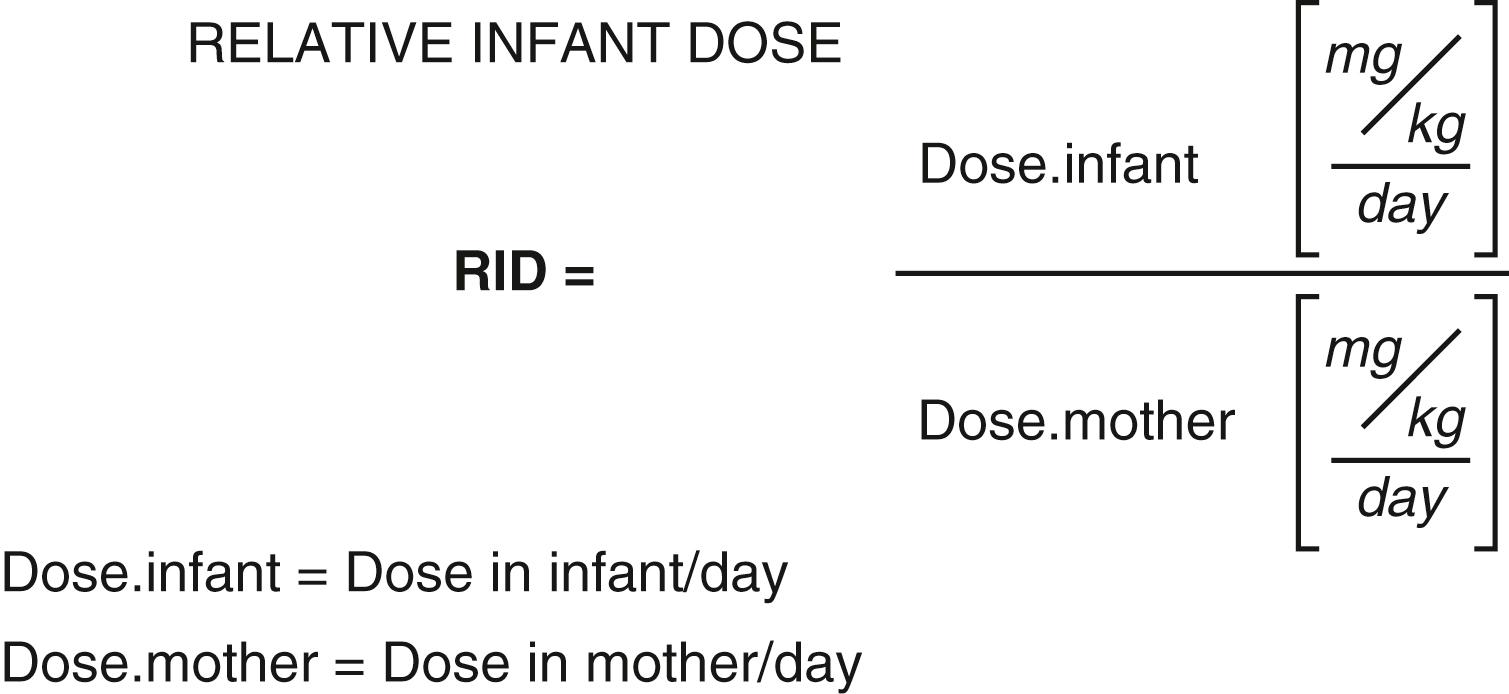Physical Address
304 North Cardinal St.
Dorchester Center, MA 02124
Since the early 2000s, researchers and clinicians have greatly expanded the knowledge base of drug entry kinetics as they relate to human milk. Most of the physiochemical properties that affect a drug’s transfer into milk are well known and understood today. , For the busy clinician, the National Institutes of Health and others have published reference works that consolidate the evidence supporting the relative safety ratings of common medications. However, many newer drugs have not yet been studied, and usable data related to lactation may be scarce.
Breastfeeding is incredibly important to the health and well-being of infants. Breast-fed infants endure fewer ear infections, have improved cognitive abilities, , and enjoy a reduced risk of psychiatric disorders as adults. The risks of incidental drug exposure in the infant rarely outweigh the benefits of breastfeeding, and a recommendation for complete breastfeeding cessation is almost never required.
Fig. 20.1 illustrates breast anatomy including the ductal system. Milk ducts extend from the nipple, backward into the breast fat pads, and terminate in extensive, grapelike, lobular-alveolar clusters, as illustrated in Fig. 20.2 . Each alveolus is lined with a single layer of polarized, secretory epithelial cells called lactocytes that are uniquely capable of synthesizing human milk. A basket-like network of myoepithelium surrounds each alveolus. These specialized smooth muscle cells have receptors for oxytocin and, when stimulated, contract to force milk out of the alveoli and into the terminal ductal system near the nipple.


During pregnancy, circulating maternal hormones (estrogen, progesterone, placental lactogen, prolactin, and oxytocin) induce a substantial increase in the size and number of alveolar complexes. However, plasma progesterone suppresses the lactocytes themselves from making milk, keeping them relatively small in size and poorly functional.
Early in the postpartum period, the initial fluid secreted by the lactocytes is called colostrum . Colostrum has limited fat and low volume, averaging less than 60 mL for the first few days. During this early postnatal stage of development, large intercellular gaps exist between the lactocytes, and numerous components from the maternal plasma are able to enter the colostrum. These include immunoglobulins (IgG, IgA, IgM, and IgE), white blood cells, and a variety of other cellular materials from the maternal circulation. Colostrum also provides important gastrointestinal (GI) tract growth factors, such as insulin-like growth factor-1(IGF-1), and maternal antibodies that suppress hazardous bacterial growth. Early breast milk even seeds the infant gut with beneficial microorganisms.
After delivery of the placenta, maternal estrogen and progesterone levels drop to below the pre-pregnancy baseline. Progesterone levels in particular reach a minimum approximately 40 hours postpartum, assuming there are no retained placental fragments. With the inhibitory influence of progesterone removed from the lactocytes, prolactin is free to stimulate copious milk synthesis and release. This is followed by a prolonged maintenance period of galactopoiesis. Thyroid hormones and low levels of estrogen play a role in stimulating milk production, but a consistently high prolactin level is the paramount factor in the maintenance of milk volume. The lactocytes also grow in number and connect to one another via an apical junctional complex that blocks direct paracellular exchange of substances between the maternal plasma and the breast milk. The resulting layer of cells, called the lactocyte barrier , has many similarities to the blood-brain barrier in terms of what substances are able to cross. The cell-to-cell junctions persist until lactation ceases, whereupon the lactocytes begin to involute and disappear.
Once the alveolar lactocytes have established their junctional complexes, the conjoined apical membranes of the individual cells form a cohesive lactocyte barrier able to regulate the transit of substances in and out of the milk compartment. The pathways for drug entry into milk are illustrated in Fig. 20.3 . Although there are some notable exceptions, which will be discussed later, drug transfer in and out of human milk is largely a result of a passive diffusion gradient driven by maternal plasma levels.

The concentration of a drug in milk (C milk ) determines infant exposure. Clinical trials that assess breastfeeding safety will report the mother’s dose and a series of C milk values as samples are collected throughout the trial. This direct measurement of C milk is the most accurate and useful way to estimate the amount of drug that the infant receives. If these studies are not available, as is frequently the case with newer drugs, then a theoretical estimation of C milk is the next best choice. The factors discussed in this section are the tools used to generate that estimate.
The ratio of the concentration of a drug in a mother’s breast milk to that in her plasma is known as the milk/plasma (M/P) ratio . M/P is an experimentally determined value for each drug. Because it is the interaction between the lactocyte barrier and the drug’s physiochemical properties that determines the M/P ratio, this value for a given drug tends to be fairly consistent in mothers taking the same drug under the same circumstances. Drugs that easily pass through the barrier have high M/P ratios, whereas drugs that cannot pass have low ratios. Note that during periods where the barrier is incomplete, such as the secretory differentiation stage (differentiation of epithelial cells into lactocytes) or late involution stage (death of secretory cells and replacement by adipocytes), drugs cannot be excluded from the milk compartment, and the M/P ratio approaches 1:1. Also, the M/P ratio does not account for active metabolites.
The primary use of the M/P ratio is to give some indication of the underlying mechanisms that affect a drug’s transfer into milk. Clinically, it has little to no role in assessing drug safety during breastfeeding unless it is exceedingly low. Many drugs with high M/P ratios still fail to attain clinically relevant doses via breast milk.
There are only a handful of drugs known to enter the milk via an energy-dependent influx transporter. These substances have an M/P ratio significantly higher than what is predicted based on the drug’s physiochemical properties alone. The drugs with a hypothesized active transport mechanism are nitrofurantoin (M/P = 6), acyclovir (M/P = 4.1), ranitidine (M/P = 6.7 to 23.77), cimetidine (M/P = 5), and iodine (M/P = 23). , Although these drugs may be concentrated in milk, they normally do not attain ranges that have a clinical effect and, with the exception of iodine, are quite safe to use in breastfeeding mothers. Iodine is transported so extensively that clinically hazardous ranges have been noted causing hypothyroidism in neonates.
It is also possible that active transport of drugs out of the breast milk compartment exists. For example, the plasma glycoprotein gene is extensively expressed in intestinal epithelium, the blood-brain barrier, hepatocytes, and renal tubules. The plasma membrane protein that this gene encodes is an efflux transporter that actively transports drugs out of cells. Metformin provides an example. Assuming a passive diffusion model, theoretical calculations of the transfer of metformin into human milk would suggest an M/P ratio of 2.9. However, three studies have reported much lower M/P values (0.63, 0.35, and 0.46, respectively) and a flat milk concentration-time profile. The lower observed M/P ratios may indicate an active efflux transporter, pumping metformin out of milk and back into the plasma.
Molecular weight is the most important determinant of how easily a substance will diffuse across a lipid bilayer, like the lactocyte barrier. Small, nonpolar molecules (<400 Da) are more likely to cross, whereas larger molecules (>800 Da) are unlikely to cross without a dedicated transport mechanism. Many preparations, such as enoxaparin (8000 Da), insulin (6000 Da), and botulism toxin (150,000 Da), are far too large to enter the milk compartment in clinically relevant amounts. Although these drugs have a concerning side-effect profile, due to their near total exclusion from milk, they are considered compatible with breastfeeding.
Most drugs travel in plasma bound to albumin or other plasma-carrier proteins. Those with high binding affinity behave like large-molecular-weight compounds and have difficulty diffusing out of the plasma. Only the free (unbound) drug is available to transfer into milk and other peripheral compartments. For example, small drugs (300 Da), such as warfarin sodium and celecoxib, are found in such low levels in milk as to be clinically irrelevant, mostly because they are 99% protein bound in the plasma. Alternatively, lithium, with no protein binding and a low molecular weight of 6.94 Da, readily enters the milk and can reach high levels.
The lipid content of milk is high, ranging from 2.3% in foremilk to as high as 8% in hindmilk. In a laboratory setting, the lipophilicity of a drug is measured by its octanol-water partition coefficient (log 10 P). The more lipid soluble a drug, the better it is able to penetrate through the lactocyte barrier and become concentrated in the milk. Such drugs are often those that penetrate the blood-brain barrier and produce high levels in the central nervous system (CNS). The antidepressant mirtazapine is a classic example. The concentration of mirtazapine in hindmilk (high lipid content) is 2.3 times higher than in foremilk (low lipid content). Thus, if a drug is active in the CNS, it may produce higher levels in breast milk as well.
The degree of ionization (p K a ) of a drug is a unique physicochemical property that controls its ionization state when in solution. If the drug’s p K a is the same as the pH of the solution it is dissolved in, then 50% of the drug exists ionized and 50% exists nonionized. As the pH of the solution changes, the state of ionization changes as well. Because the pH of milk (7.2) is lower than that of plasma (7.4), drugs with a p K a greater than 7.4 will partially ionize in the milk compartment. Ionized compounds are less lipophilic and are less able to pass through a lipid bilayer. The newly ionized form of the drug may have difficulty diffusing back out of the milk. Thus, the ion-trapping phenomenon can significantly elevate C milk above what is expected from passive diffusion alone.
A drug’s volume of distribution (V d ) is the theoretical amount of water in which a given dose would have to be dissolved to produce an experimentally measured maximum plasma concentration. A dose of a drug that has a high V d produces a lower plasma concentration than the same dose of a drug with a low V d . The concentration of a drug in milk is almost exclusively dependent on the concentration of that drug in the mother’s plasma; therefore drugs with a high V d tend to produce lower levels in milk. Drugs with a very high volume of distribution, such as digoxin ( V d = 6 to 7 L/kg) or marijuana, tend to concentrate in the peripheral tissues and do not appear in the milk in clinically relevant amounts after the absorption phase.
Ultimately, the evaluation of risk to the infant depends on how toxic the drug is and how much of it the infant receives. There are two ways of calculating the infant’s dose: the absolute infant dose (AID) and the relative infant dose (RID).
The AID is an estimate of the drug concentration in milk (per mL) multiplied by the volume of milk received each day, where C max is equal to the maximum concentration of drug in milk or where C ave is the average concentration of drug in milk throughout the dosing period:
The use of C max almost always leads to an overestimate of the actual infant dose. When C ave is available, it is more clinically useful. This method assumes that the volume of milk received each day is known. However, many mothers who do not pump do not actually know the volume of milk they feed to the infant each day. Most sources now use a value of 150 mL/kg/day, where kg refers to infant weight, as an estimate of milk delivery to an infant. This estimate only applies to the classic picture of an exclusively breast-fed infant and then only for about the first 4 months postpartum. Toddlers, infants feeding in the colostral period, children supplemented with formula or cereal, and infants of mothers with milk supply problems may receive considerably less than this amount.
The RID ( Fig. 20.4 ) provides an estimate of the weight-normalized dose relative to the mother’s dose. If the mother takes 100 mg daily of a drug with an RID of 7%, an exclusively breast-fed infant will receive about 7 mg/day. The RID is the most useful method for assessing drug safety in breastfeeding and is commonly used in many reviews and textbooks.

In 1996, pharmacologist Paul Bennett suggested an RID safety cutoff value of 10%. He considered doses higher than this to be more risky and doses less than 10% to be relatively safer. This level has been widely accepted in the literature as a crude metric for assessing breastfeeding safety. However, each mother’s situation is different, and properly evaluating an individual case means looking at several factors in a careful risk-benefit analysis.
Some medications do not have to be absorbed systemically in order to exert an effect on the baby. Medications presented to the infant in breast milk can produce local effects in the GI tract, such as irritating the mucosa, disrupting the gut flora, or acting as an osmotic laxative. Diarrhea and constipation are the most common symptoms, but others are possible. If the drug uses a nonoral route of administration, the manufacturer may not report local GI side effects because they did not surface during the clinical trials.
Bioavailability refers to the proportion of a dose that reaches the systemic circulation after its administration. Drugs taken orally are absorbed into the portal circulation of the gut, pass through the liver, and are then delivered to the general circulation. The liver sequesters and metabolizes many drugs, often eliminating their systemic effect. This is particularly true of some opiates (e.g . , morphine), which are largely metabolized during their first pass through the liver.
Although little is known about the oral absorption or bioavailability of medications in infants, there are apparently many similarities, particularly after the first month of life. Gastric emptying time is delayed in neonates and intestinal absorption is irregular. Slower intestinal absorption tends to be advantageous, because this will keep plasma concentrations of medications lower in the infant. Medications with poor oral bioavailability in adults usually have poor absorption in infants.
Furthermore, drug formulations that are only bioavailable because of special modifications to the tablet or a nonoral route of administration, often produce very low plasma levels after being ingested by a breastfeeding infant. Enoxaparin, for example, is injected into the mother’s adipose tissue, passes into her milk, and is then immediately destroyed in the infant’s stomach. The proton pump inhibitors (e.g., omeprazole) are similarly vulnerable to stomach acid and have to be taken in an enteric-coated capsule. Because the capsule dissolves in the mother’s intestines, the uncoated drug in the breast milk is unlikely to make it past the baby’s stomach and into the bloodstream. Recent data suggest that aspirin is not present in human milk, as it is cleared during the first pass by the liver, leaving none in the peripheral circulation to enter breast milk.
Thus, choosing medications with poor oral bioavailability ultimately leads to reduced drug exposure in the infant. Box 20.1 lists some medications that are poorly bioavailable orally.
Abatacept
Acyclovir
Atorvastatin
Bacitracin
Benzoyl peroxide
Budesonide
Carboplatin
Cefdinir
Ceftriaxone
Chlorothiazide
Chondroitin sulfate
Dalteparin
Sumatriptan
Vancomycin
Daptomycin
Gentamicin
Morphine
Natalizumab
An infant’s metabolic status determines his or her ability to adjust and maintain homeostasis while exposed to drugs. Infants at low risk of complications are generally older children (6 to 18 months) who can metabolize and handle drugs efficiently. Moderate-risk infants are those younger than 4 months who have additional risk factors, such as complications from the delivery, apnea, GI anomalies, hepatitis, or other metabolic problems. Infants at higher risk are unstable neonates or premature infants or infants with poor renal function.
In summary, the evaluation of the safety of drugs in breast milk depends on four major factors: the amount of medication present in the breast milk, the maternal dose of the medication, the toxicity of the drug, and the ability of the infant to clear the medication if absorbed. Even though there are numerous studies reviewing the levels of drugs in breast milk and their bioavailability, each infant’s ability to clear most medications is still highly variable and requires close evaluation by the attending clinician.
The following sections describe the transfer of many drugs and drug classes into human milk. This is not a complete listing of all possible medications, but rather a survey of common and interesting examples. The levels in milk can be approximated using kinetics, but nothing is superior to actual studies in breastfeeding mothers. Many drugs have been studied in the last 30 years, and these data are in part listed below by drug category. In general, drugs with an RID less than 10% are generally considered compatible with breastfeeding. Notable exceptions and illustrative examples are discussed.
A few simple strategies can help to mitigate the risks of drug exposure to the baby:
Consider nondrug therapies whenever possible.
Substitute formulations with topical or local activity. For example, rectal mesalamine is less systemically absorbed than the oral form and may be equally effective in treating proctitis.
Feeding and pumping schedules that avoid the peak plasma concentration can effectively reduce a drug’s RID to a more manageable level. This is only useful for drugs that have a short half-life.
Diluting the breast milk with donor human milk or hydrolyzed formula can also reduce drug exposure. Donor human milk is preferred because it is closest in composition to the mother’s own milk. This works best with short-term, high-dose situations, such as pain control after surgery.
Radioisotopes continue to degrade in stored milk samples. In the right circumstances, it may be possible to reduce the risk of toxicity by storing milk for a period of time (technetium-99).
See Table 20.1 .
| Generic Drug | RID (%) | Lactation Risk | Evidence |
|---|---|---|---|
| Acetaminophen | 6–9 | Very low | |
| Acetylsalicylic acid | 0 | Low Acetylsalicylic acid is undetectable. Only Salicylic acid is found in milk. |
|
| Celecoxib | <0.7 | Low | , , |
| Ibuprofen | <0.7 | Very low | |
| Ketorolac | <0.2 | Low | , |
| Naproxen | 3 | Low (short term) Moderate (chronic) |
|
| Indomethacin | 1 | Low | , |
| Tramadol | 3 | Low | |
| Morphine | 9–35 | Low | |
| Hydrocodone | 3 | Low | , |
| Oxycodone | 1–5 | Low | , |
| Codeine | 0.6–8 | Moderate | |
| Fentanyl | 3–5 | Low |
Used briefly and in low doses, aspirin (acetylsalicylic acid) probably poses little risk to a breast-fed infant. Reye syndrome, a rare form of hepatic encephalopathy, has been associated with acetylsalicylic acid exposure during a viral illness. Unfortunately, it is not clear how the dosage of aspirin or the age of the infant affects the risk of developing this condition. Most cases of Reye syndrome occur among adolescents using therapeutic doses of aspirin (650 mg or more). Current evidence suggests that low-dose (81 to 325-mg) aspirin is probably compatible with breastfeeding. Aspirin is immediately removed from the plasma during the first pass in the liver, thus no acetylsalicylic acid is found in human milk. As Reye syndrome has been associated with aspirin but not salicylic acid, a brief waiting period of 2 hours to breast-feed following administration of aspirin would likely remove any risk.
Become a Clinical Tree membership for Full access and enjoy Unlimited articles
If you are a member. Log in here